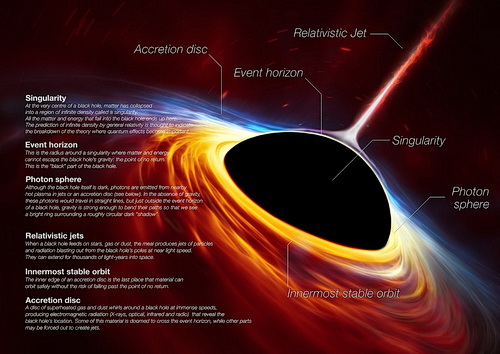
Natural gas is considered to be one of the most essential fuels used in households. Natural gas, which primarily comprises methane is commonly used in oven and stoves in almost every country of the world. Chemically, natural gas is composed of one part of carbon and four parts of hydrogen. It is much lighter in weight compared to oxygen. This is the reason why it evaporates very rapidly. Natural gas has a pungent smell which can be noticed quite easily.
This gas is an important fossil fuel and originally natural gas reserves were classified as associated and non-associated reserves. Associated gas reserves are found along with oil reserves. They can be extracted or transferred back to the reservoir. Non-associated gas reserves are gas reserves found independently. However, as of now, we categorize natural gas into two different types; conventional natural gas and unconventional natural gas, also known as shale gas. These two distinct types of natural gas are found in different types of rock formations. Regardless of the type, natural gas is primarily used as a domestic fuel. It also has wide industrial applications and is also used as an alternative fuel for vehicles.
Today the global reserves of natural gas are estimated to be 7,121.4 trillion cubic feet. 80% of the total proven natural gas reserves are found in eight countries. It is expected that there are other reserves of natural gas, which are not proven so far. From the data of 2018, the top five countries with the largest reserves of natural gas are:
Russia
Russia holds the largest reserves of natural gas in the world. As of 2018, the country’s reserves are estimated to be 1,688.23 trillion. This makes up for around 24% of the global reserves of natural gas. Hence, Russia has a big stake whenever the global gas prices fluctuate. More than 50% of the Russian gas reserves are located in the cold region of Siberia, specifically in the Nadym-Pur-Taz (NPT) region of the upper-western Siberia. The three largest gas fields in Siberia are Yamburg, Urengov, and Medvedev, which account for nearly 45% of the total country’s gas output.
Gazprom, a state-run company, is responsible for more than 80% of the gas production in the country. This is one of the biggest known stakes in a natural resource for a single entity as this accounts for 20% of the world’s gas production.
Iran
Second on the list with the largest gas reserves is Iran. The country which has always been under political instability and sanctions has managed to capitalize on its natural resources. Iran is not only rich in natural gas but possesses many other natural resources.
Iran holds almost 1,200 trillion tons of natural gas, which accounts for almost 18% of the total global gas reserves. The largest gas field in the world, the South Pars is located in Iran. More than 80% of the Iranian gas reserves are non-associated gas reserves. This means that they are not found along with reserves of crude oil. 60 % of the country’s total gas reserves are located in the ocean as South Pars extends to Qatar and a large part of it is in the ocean. This gas field is responsible for more than 25% of the country’s total gas output. Other major gas fields in Iran include the North Pars, Kish, and Kangan.
Recently, Iran discovered a new natural gas reserve, which according to its oil ministry holds 19 trillion cubic feet (tcf) of the resource and could potentially produce 400 million barrels, worth about $40 billion. However, increased sanctions by the US may prove cumbersome and delay or even halt their natural gas exports from this area. We’ll have to wait and see how this plays out.
Qatar
Qatar, a Middle Eastern nation, which is the largest supplier of LNG liquid natural gas comes third on the list of largest gas reserves.. The country possesses around 175.5 billion cubic meters of proven natural gas reserves. The South Pars located in Iran extends to Qatar. This is the world’s largest offshore field holding the largest reserves of non-associated gas. Another major gas field located in Qatar is the North field. Also, the Barzan gas project played an important role in increasing the output of gas in Qatar since its completion in 2015.
Saudi Arabia
The global oil-producing giant and a leading member of OPEC comes fourth on the list. The country holds over 7.9 billion cubic meters of gas reserves which makes up almost 4% of the world’s total proven gas reserves.
The Famous Ghawar onshore, Ghawar offshore, Safaniya, and Zuluf fields produce more than 50 % of the total gas output. These gas fields account for more than 55% of the total reserves in the country. There are many nonassociated gas fields in the country as well. They include the Karan field, Arabiyah field, and Hasbah gas fields.
Turkmenistan
5th on the list is Turkmenistan. The country also holds proven gas reserves of 7.57 billion cubic meters which account for almost 4% of the world’s supply. The reserves are located mainly in the Amu Darya Basin in the South East and the Murgab South Caspian Basin which is located in Western Turkmenistan. The Dauletabad field is by far the oldest and the largest gas field in the whole country.
The country lacks proper infrastructure and there have been very few developments when it comes to the oil and gas sector.
There are some other major players when it comes to global reserves of natural gas. This includes countries such as Venezuela, Nigeria, Australia, Iraq, China, and Israel with exports planned to go to Egypt and Jordan shortly. Additionally, Israel recently signed a deal with Greece and Cyprus to export natural gas to these countries as well.




















